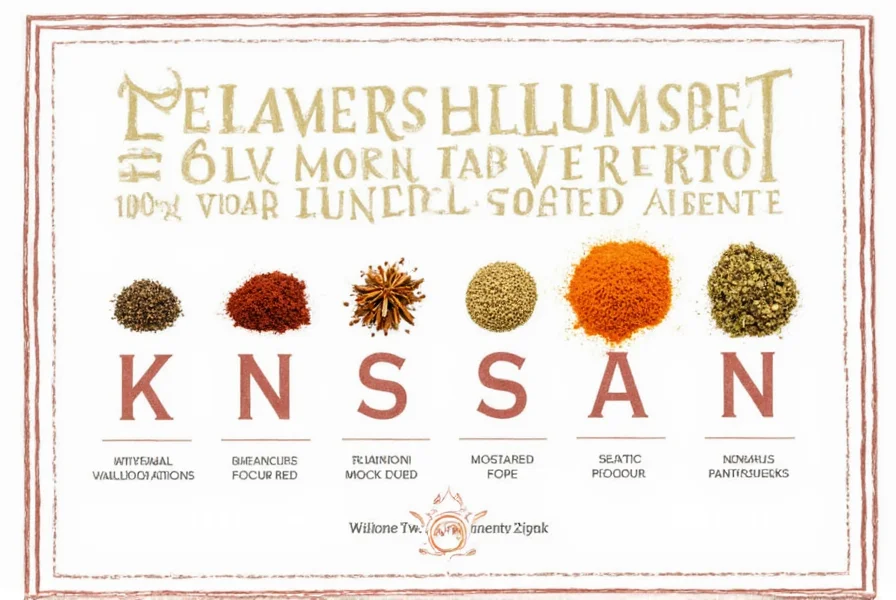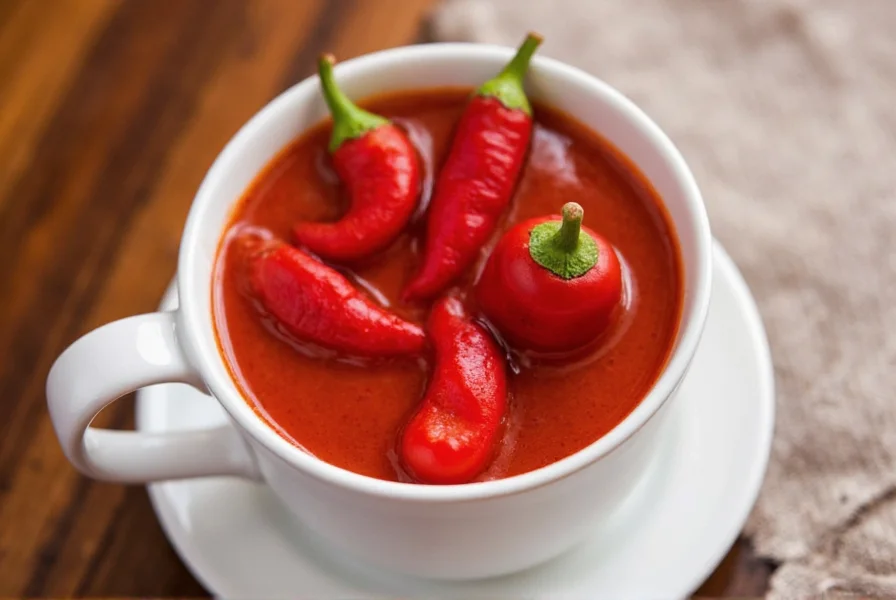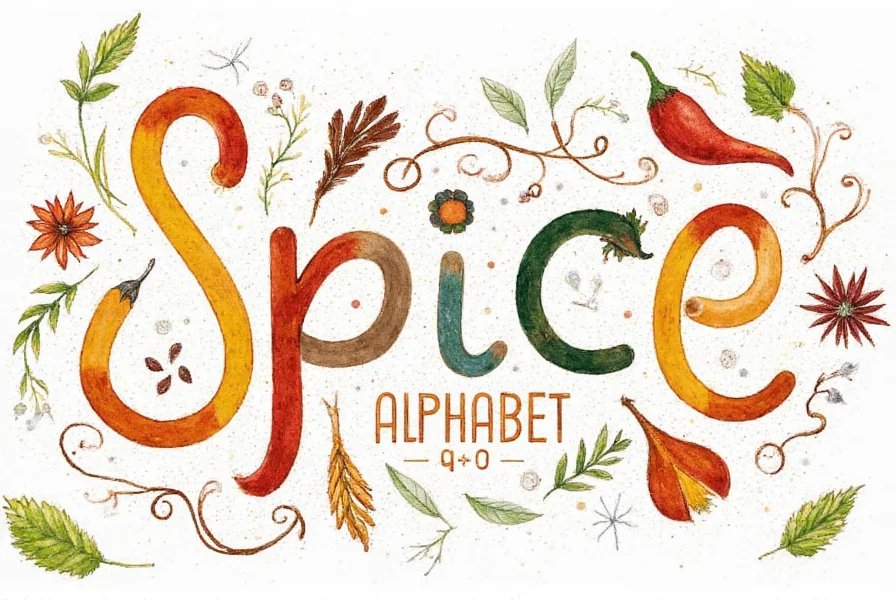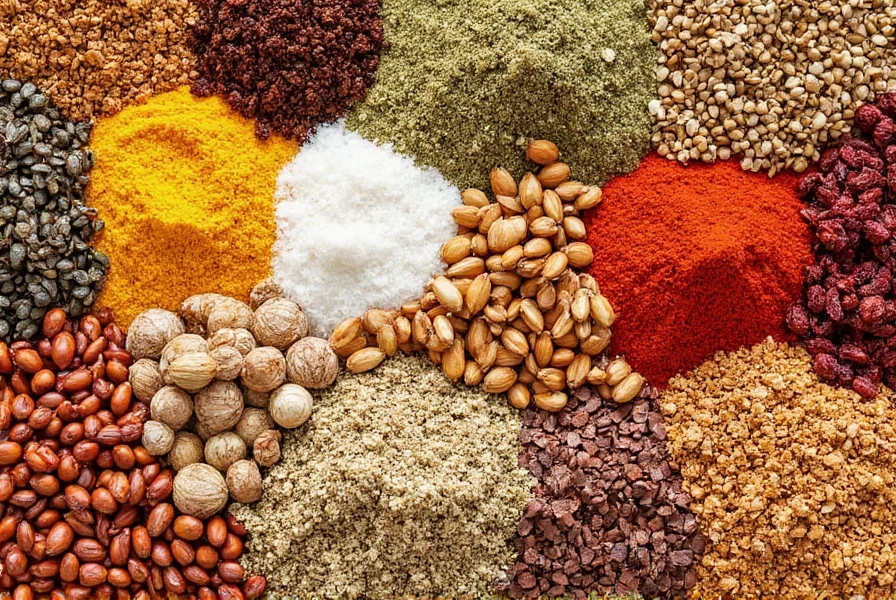Table of Contents
- Introduction to Spices
- Spice Basics: Understanding the Essentials
- Complete Alphabetical List of Spices
- Spice Comparison: A Comprehensive Reference Table
- Practical Tips for Using Spices in Everyday Cooking
- Buying Guide: How to Choose Quality Spices
- Frequently Asked Questions About Spices
- Conclusion: Embrace the Flavors of the World
Introduction to Spices
Spices have been used for thousands of years to enhance flavor, preserve food, and provide health benefits. From ancient trade routes to modern kitchens, spices connect cultures and transform ordinary meals into extraordinary culinary experiences. This comprehensive guide provides detailed information about common spices to help you make the most of these flavor powerhouses.

Spice Basics: Understanding the Essentials
Spices come from various parts of plants - seeds, bark, roots, flowers, and fruits. Unlike herbs (which typically come from leafy parts of plants), spices are usually dried and have more intense flavors. Understanding the different spice categories helps you use them effectively in cooking.
- Warm Spices: Cinnamon, nutmeg, cloves, and ginger - perfect for baking and winter dishes.
- Hot Spices: Chili powder, cayenne, paprika, and black pepper - add heat and depth to dishes.
- Earthy Spices: Cumin, coriander, turmeric, and cardamom - provide rich, complex flavors to savory dishes.
- Floral Spices: Saffron, lavender, and rose petals - delicate flavors for special dishes.
- Herb-Like Spices: Dill, fennel, and tarragon - bridge the gap between herbs and spices.

Complete Alphabetical List of Spices
Allspice
Flavor Profile: Warm, sweet, with notes of cinnamon, nutmeg, and cloves
Common Uses: Jamaican jerk seasoning, pickling, baked goods, meat rubs
Storage Tips: Store whole berries in airtight container; grind as needed for best flavor
Anise
Flavor Profile: Sweet, licorice-like
Common Uses: Italian sausage, baked goods, teas, liqueurs
Storage Tips: Keep seeds in a cool, dark place; whole seeds last longer than ground
Basil
Flavor Profile: Sweet, slightly peppery, with hints of mint and clove
Common Uses: Italian cuisine, pesto, tomato dishes, fresh salads
Storage Tips: Fresh basil should be kept at room temperature; dried basil loses flavor quickly
Bay Leaf
Flavor Profile: Herbal, slightly floral, with notes of pine and menthol
Common Uses: Soups, stews, braises, rice dishes
Storage Tips: Store in airtight container away from light; whole leaves last 2-3 years
Cardamom
Flavor Profile: Complex, floral, with notes of citrus and mint
Common Uses: Indian curries, Scandinavian baking, coffee, chai tea
Storage Tips: Store whole pods in airtight container; grind just before use
Cayenne Pepper
Flavor Profile: Hot, pungent, with a bright red color
Common Uses: Hot sauces, spicy rubs, chili, Cajun dishes
Storage Tips: Keep in a cool, dark place; use within 1 year for best heat level
Cinnamon
Flavor Profile: Sweet, warm, woody
Common Uses: Baking, oatmeal, coffee, curries, mulled wine
Storage Tips: Store ground cinnamon in airtight container; cinnamon sticks last longer than ground
Clove
Flavor Profile: Strong, sweet, pungent, with a hint of bitterness
Common Uses: Holiday baking, mulled wine, ham glazes, Indian curries
Storage Tips: Whole cloves last 3-4 years; ground cloves lose potency after 6 months
Coriander
Flavor Profile: Common Uses: Indian curries, Mexican dishes, spice blends, pickling Storage Tips: Store whole seeds in airtight container; grind as needed for best flavor Flavor Profile: Earthy, nutty, slightly bitter Common Uses: Mexican tacos, Indian dals, Middle Eastern dishes, chili Storage Tips: Whole cumin seeds last longer than ground; toast before using for enhanced flavor Flavor Profile: Fresh, grassy, slightly anise-like Common Uses: Pickling, fish dishes, potato salad, yogurt sauces Storage Tips: Fresh dill should be used quickly; dried dill loses its delicate flavor Flavor Profile: Sweet, licorice-like, with a mild anise note Common Uses: Italian sausage, bread, fish dishes, digestive teas Storage Tips: Store seeds in airtight container; whole seeds last longer than ground Flavor Profile: Common Uses: Indian curries, spice blends, pickling, Ethiopian dishes Storage Tips: Store seeds in airtight container; ground fenugreek loses potency quickly Flavor Profile: Concentrated garlic flavor, slightly sweet when cooked Common Uses: Seasoning blends, rubs, sauces, soups Storage Tips: Keep in airtight container away from light; lasts 2-3 years Flavor Profile: Common Uses: Asian cuisine, baking, teas, marinades Storage Tips: Fresh ginger can be stored in freezer; ground ginger lasts 2-3 years Flavor Profile: Common Uses: Salad dressings, marinades, sauces, spice rubs Storage Tips: Whole seeds last longest; ground mustard loses potency after 6 months Flavor Profile: Common Uses: Baking, custards, béchamel sauce, spice blends Storage Tips: Whole nutmeg lasts 3-4 years; freshly grated has best flavor Flavor Profile: Common Uses: Italian and Mexican cuisine, tomato sauces, grilled meats Storage Tips: Dried oregano should be stored in airtight container; lasts 1-2 years Flavor Profile: Common Uses: Spanish paella, Hungarian goulash, BBQ rubs, deviled eggs Storage Tips: Store in cool, dark place; loses color and flavor quickly when exposed to light Flavor Profile: Common Uses: Garnish, tabbouleh, sauces, soups Storage Tips: Fresh parsley should be stored like flowers; dried parsley loses flavor quickly Flavor Profile: Common Uses: Almost any savory dish, seasoning at table Storage Tips: Whole peppercorns last 3-4 years; grind as needed for best flavor Flavor Profile: Common Uses: Light-colored dishes where black specks would be visible Storage Tips: Whole white peppercorns last 2-3 years; ground loses potency quickly Flavor Profile: Common Uses: Roasted meats, potatoes, breads, marinades Storage Tips: Fresh rosemary should be refrigerated; dried lasts 1-2 years Flavor Profile: Common Uses: Paella, risotto, bouillabaisse, desserts Storage Tips: Store in airtight container away from light; expensive but lasts years Flavor Profile: Common Uses: Stuffing, sausage, roasted poultry, butter sauces Storage Tips: Dried sage should be stored in airtight container; lasts 1-2 years Flavor Profile: Common Uses: Storage Tips: Store in airtight container; lasts 1-2 years Flavor Profile: Common Uses: French cuisine, béarnaise sauce, chicken dishes, vinegar Storage Tips: Fresh tarragon should be used quickly; dried loses delicate flavor Flavor Profile: Common Uses: Soups, stews, roasted meats, marinades Storage Tips: Dried thyme should be stored in airtight container; lasts 1-2 years Flavor Profile: Common Uses: Indian curries, golden milk, rice dishes, natural food coloring Storage Tips: Store in airtight container away from light; ground turmeric lasts 1-2 years Flavor Profile: Common Uses: Baking, desserts, beverages, sauces Storage Tips: Vanilla beans should be stored in airtight container; extract lasts indefinitely Choosing high-quality spices makes a significant difference in your cooking. Here's what to look for: Herbs typically come from the leafy parts of plants (like basil, parsley, and rosemary) and are often used fresh. Spices come from other parts of plants including seeds (cumin, coriander), bark (cinnamon), roots (ginger, turmeric), flowers (saffron), and fruits (peppercorns, chili peppers). Spices are usually dried and used in smaller quantities than herbs due to their stronger flavor profiles. Whole spices generally last 3-4 years when stored properly, while ground spices maintain their potency for about 1-2 years. The shelf life depends on storage conditions - spices kept away from heat, light, and moisture will last longer. You can test if your spices are still good by rubbing a small amount between your fingers and smelling them; if the aroma is weak, it's time to replace them. Whenever possible, buying whole spices and grinding them as needed is recommended for maximum flavor. Whole spices retain their essential oils and aromas longer than pre-ground versions. A dedicated spice grinder or mortar and pestle can help you achieve freshly ground spices at home. However, for convenience, pre-ground spices work well for everyday cooking when stored properly and used within their shelf life. Store spices in airtight containers away from direct sunlight, heat, and moisture. The ideal storage location is a cool, dark cupboard away from your stove or oven. Avoid storing spices in the refrigerator as condensation can cause clumping and flavor degradation. Glass jars with tight-fitting lids work better than plastic containers for preserving spice quality. A basic spice collection should include: black pepper, salt, garlic powder, onion powder, cumin, paprika, cinnamon, and red pepper flakes. These eight spices can cover a wide range of cuisines and cooking styles. As you become more comfortable, you can expand to include spices like turmeric, coriander, cardamom, and saffron for more specialized dishes. Paprika is made from ground sweet red peppers and ranges from mild to hot varieties, with smoked paprika being particularly popular. Chili powder is typically a blend that includes ground chilies along with other spices like cumin, garlic powder, and oregano. Pure paprika has a more straightforward pepper flavor, while chili powder offers a more complex, seasoned profile commonly used in Mexican and Tex-Mex cooking. Yes, but with caution. Some spices have close flavor profiles that can work as substitutes: cumin can sometimes replace chili powder (though milder), allspice can substitute for cloves, and coriander can stand in for cardamom. However, some spices are unique and difficult to replace (like saffron or sumac). When substituting, start with half the recommended amount and adjust to taste, as flavor intensities vary between spices. Spices are more than just flavor enhancers - they're a gateway to global cuisine, history, and culture. With this comprehensive alphabetical list of spices, you now have a reliable reference to explore the world of flavors. Whether you're cooking at home or experimenting in the kitchen, understanding these ingredients can open up a world of culinary possibilities. Remember, the key to great cooking lies in balance, curiosity, and a willingness to experiment. So go ahead - grab that jar of cumin, sprinkle some paprika, and let your taste buds take the journey.Cumin
Dill
Fennel
Fenugreek
Garlic Powder
Ginger
Mustard
Nutmeg
Oregano
Paprika
Parsley
Pepper (Black)
Pepper (White)
Rosemary
Saffron
Sage
Sumac
Tarragon
Thyme
Turmeric
Vanilla
Spice Flavor Profile Heat Level Common Uses Storage Tips Allspice Warm, sweet, with notes of cinnamon, nutmeg, and cloves Low Jamaican jerk seasoning, pickling, baked goods, meat rubs Store whole berries; grind as needed Anise Sweet, licorice-like None Italian sausage, baked goods, teas, liqueurs Keep seeds in cool, dark place Basil Sweet, slightly peppery, with hints of mint and clove None Italian cuisine, pesto, tomato dishes, fresh salads Keep fresh basil at room temperature Bay Leaf Herbal, slightly floral, with notes of pine and menthol None Soups, stews, braises, rice dishes Whole leaves last 2-3 years Cardamom Complex, floral, with notes of citrus and mint Low Indian curries, Scandinavian baking, coffee, chai tea Store whole pods; grind just before use Cayenne Pepper Hot, pungent High Hot sauces, spicy rubs, chili, Cajun dishes Keep in cool, dark place; use within 1 year Cinnamon Sweet, warm, woody None Baking, oatmeal, coffee, curries, mulled wine Store ground in airtight container; cinnamon sticks last longer Clove Strong, sweet, pungent Medium Holiday baking, mulled wine, ham glazes, Indian curries Whole cloves last 3-4 years Coriander Citrusy, floral, slightly sweet None Indian curries, Mexican dishes, spice blends, pickling Store whole seeds; grind as needed Cumin Earthy, nutty, slightly bitter Low Mexican tacos, Indian dals, Middle Eastern dishes, chili Whole seeds last longer; toast before using Dill Fresh, grassy, slightly anise-like None Pickling, fish dishes, potato salad, yogurt sauces Fresh dill should be used quickly Fennel Sweet, licorice-like None Italian sausage, bread, fish dishes, digestive teas Store seeds in airtight container Fenugreek Bitter, nutty, with maple-like notes when roasted Low Indian curries, spice blends, pickling, Ethiopian dishes Store seeds; ground loses potency quickly Garlic Powder Concentrated garlic flavor Low Seasoning blends, rubs, sauces, soups Keep in airtight container away from light Ginger Warm, spicy, slightly sweet Medium Asian cuisine, baking, teas, marinades Fresh ginger can be frozen; ground lasts 2-3 years Mustard Pungent, sharp Medium Salad dressings, marinades, sauces, spice rubs Whole seeds last longest Nutmeg Warm, sweet, slightly nutty None Baking, custards, béchamel sauce, spice blends Whole nutmeg lasts 3-4 years; freshly grated has best flavor Oregano Robust, earthy, slightly bitter Low Italian and Mexican cuisine, tomato sauces, grilled meats Dried oregano lasts 1-2 years Paprika Sweet, smoky, or hot Low to high Spanish paella, Hungarian goulash, BBQ rubs, deviled eggs Store in cool, dark place; loses color quickly Parsley Fresh, grassy, slightly peppery None Garnish, tabbouleh, sauces, soups Dried parsley loses flavor quickly Pepper (Black) Sharp, pungent Medium Almost any savory dish Whole peppercorns last 3-4 years Pepper (White) Milder than black pepper Medium Light-colored dishes Whole white peppercorns last 2-3 years Rosemary Pine-like, woody None Roasted meats, potatoes, breads, marinades Dried lasts 1-2 years Saffron Floral, honey-like None Paella, risotto, bouillabaisse, desserts Store in airtight container; expensive but lasts years Sage Earthy, slightly peppery Low Stuffing, sausage, roasted poultry, butter sauces Dried sage lasts 1-2 years Sumac Tart, lemony None Middle Eastern dishes, salad dressings, grilled meats Store in airtight container Tarragon Anise-like, sweet None French cuisine, béarnaise sauce, chicken dishes Dried loses delicate flavor Thyme Earthy, floral Low Soups, stews, roasted meats, marinades Dried lasts 1-2 years Turmeric Earthy, slightly bitter None Indian curries, golden milk, rice dishes Store away from light; ground lasts 1-2 years Vanilla Sweet, creamy None Baking, desserts, beverages Extract lasts indefinitely Practical Tips for Using Spices in Everyday Cooking

Buying Guide: How to Choose Quality Spices
Frequently Asked Questions About Spices
What's the difference between spices and herbs?
How long do spices last before losing their potency?
Should I buy whole spices and grind them myself?
What's the best way to store spices?
What's the most essential spice collection for beginners?
What's the difference between paprika and chili powder?
Can I substitute one spice for another if I don't have what a recipe calls for?
Conclusion: Embrace the Flavors of the World












 浙公网安备
33010002000092号
浙公网安备
33010002000092号 浙B2-20120091-4
浙B2-20120091-4